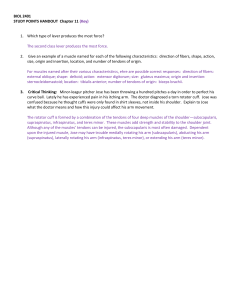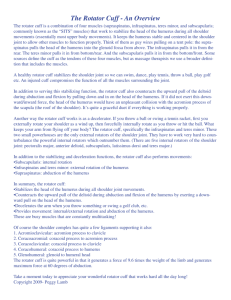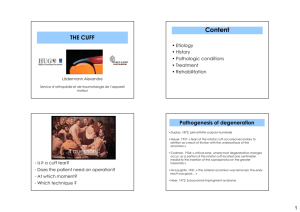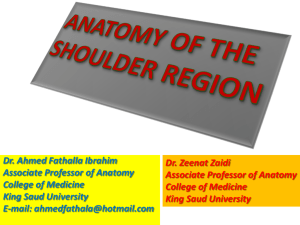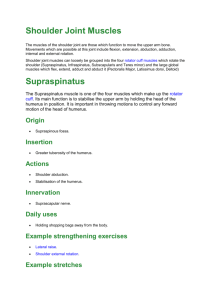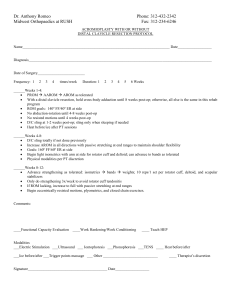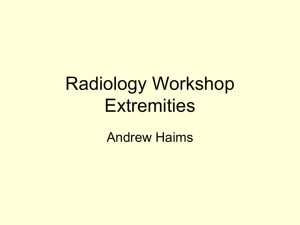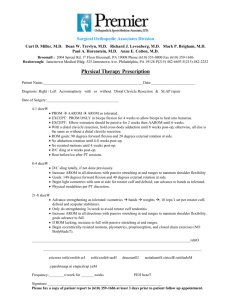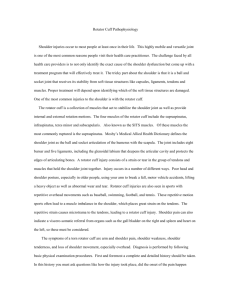Course Outline
advertisement
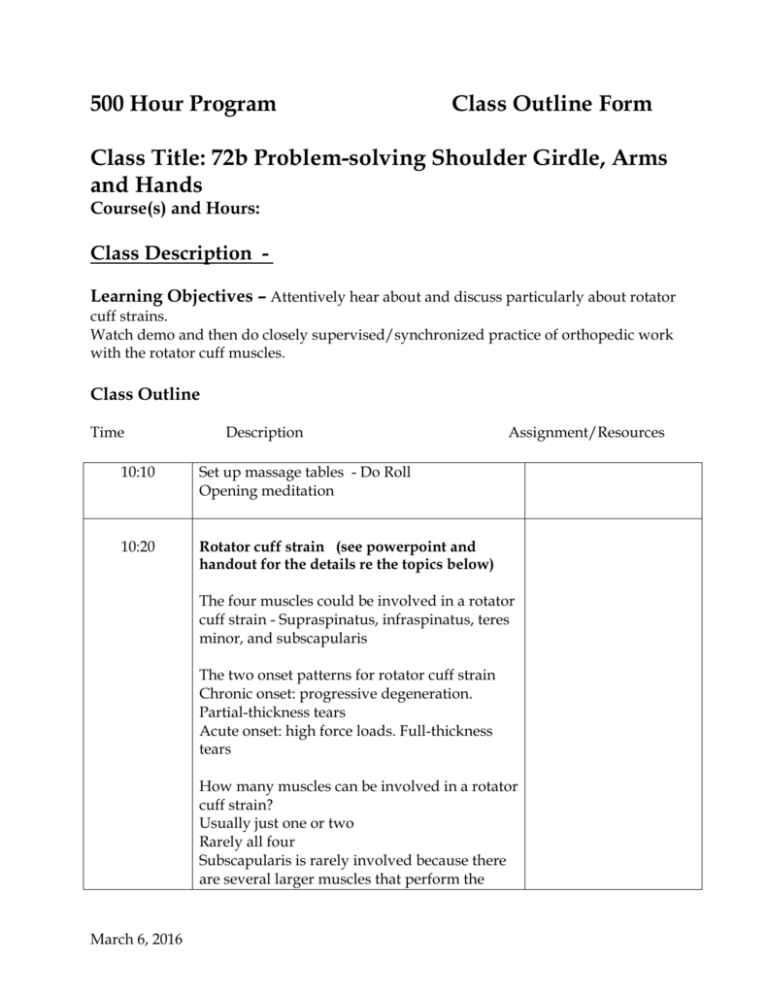
500 Hour Program Class Outline Form Class Title: 72b Problem-solving Shoulder Girdle, Arms and Hands Course(s) and Hours: Class Description Learning Objectives – Attentively hear about and discuss particularly about rotator cuff strains. Watch demo and then do closely supervised/synchronized practice of orthopedic work with the rotator cuff muscles. Class Outline Time Description 10:10 Set up massage tables - Do Roll Opening meditation 10:20 Rotator cuff strain (see powerpoint and handout for the details re the topics below) Assignment/Resources The four muscles could be involved in a rotator cuff strain - Supraspinatus, infraspinatus, teres minor, and subscapularis The two onset patterns for rotator cuff strain Chronic onset: progressive degeneration. Partial-thickness tears Acute onset: high force loads. Full-thickness tears How many muscles can be involved in a rotator cuff strain? Usually just one or two Rarely all four Subscapularis is rarely involved because there are several larger muscles that perform the March 6, 2016 same actions and provide support How is a strain assessed in the rotator cuff? Suprapinatus: pain during resisted glenohumeral abduction Infraspinatus / Teres minor: pain during glenohumeral lateral rotation Subscapularis: pain during glenohumeral medial rotation What are some traditional treatments for a rotator cuff strain? Which muscles should be addressed for strain of any rotator cuff muscle? 10:35 supraspinatus strain bony structures involved Underside of the acromion process Superior surface of the humerus results of subacromial compression Tendinosis of the supraspinatus How does naturally decreased vascularity near the supraspinatus insertion effect a strain? Slower healing time Increased risk of tendinosis Calcific tendinitis 10:40 Infraspinatus/Teres Minor Strain What action commonly leads to an infraspinatus and teres minor strain? What can lead to tendinosis of the infraspinatus and teres minor muscles? Overuse Overloading Strain March 6, 2016 10:45 Subscapularis Strain - What serious injury often accompanies a subscapularis strain? Glenohumeral dislocation 10:50 Describe the Soft Tissue Manipulation for Rotator cuff problem Prone Upper back myofascial release Deep effleurage Trapezius and deltoid Swedish Supraspinatus, infraspinatus, and teres minor stripping Infraspinatus and teres minor AMT stripping Trigger point deactivation Supraspinatus insertion tendon deep transverse friction Infraspinatus and teres minor stretching Supine Deep Massage Anterior deltoid Swedish Subscapularis trigger point deactivation and friction Subscapularis stretching Considerations and Cautions First assess which muscle or muscles are torn. Accurate assessment is essential to determine the severity. Avoid vigorous deep friction on a recent or severe injury. Advise the client to cease or rest from any offending activities. Treat all muscles of the shoulder area to regain biomechanical balance. March 6, 2016 11:00 11:15 Break (set up massage tables) DEMO - Soft Tissue Manipulation (see power point for details) Prone Upper back myofascial release Deep effleurage Trapezius and deltoid Swedish Supraspinatus, infraspinatus, and teres minor stripping Infraspinatus and teres minor AMT stripping Trigger point deactivation Supraspinatus insertion tendon deep transverse friction Infraspinatus and teres minor stretching Supine Deep Massage Anterior deltoid Swedish Subscapularis trigger point deactivation and friction Subscapularis stretching 11:45 Practice #1 12:30 Practice #2 1:15 Put tables away then Circle up – learnings, surprises, disappointments, satisfactions, questions? March 6, 2016
